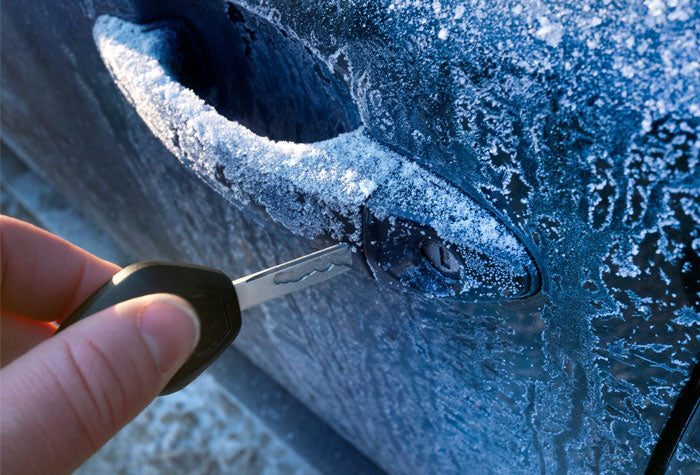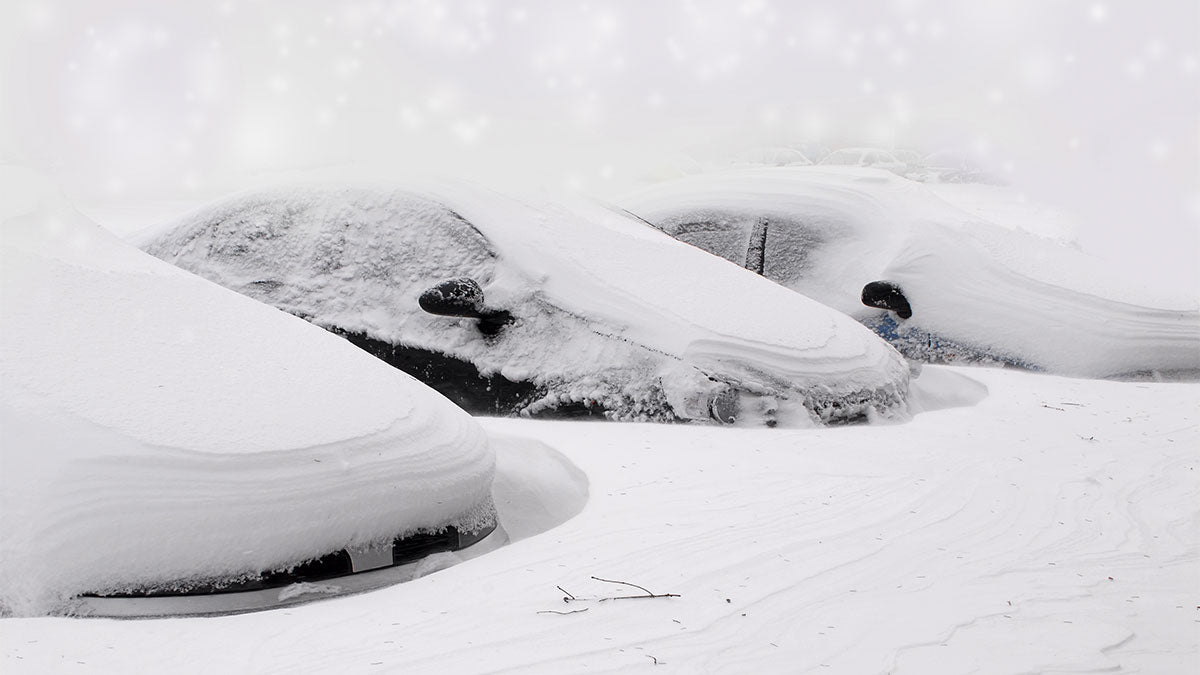I will never forget the time I attended a bridal shower in Savannah, Georgia, for a friend moving to Minnesota, and she was gifted a winter car survival kit.
Upon opening the unusual gift (unusual for Savannah), she laughed and thought it was a silly joke.
The woman who gave the gift was from Minnesota, where the bride-to-be was moving, and she quickly assured the bride that the gift was no joke.
Minnesota winters are brutal, and hundreds of Minnesotans find themselves stranded on the roadside each year. And for those who are unprepared, the cold can kill…quickly.
Winterizing your car and being prepared to survive being stranded in a vehicle during winter weather isn’t just for folks in Minnesota.
Anytime you travel where snowy conditions are possible (over 70% of the nation’s roads are located in snowy regions), you are at risk of being stranded.
Just consider the nightmare scenario that happened on Virginia highways this past winter.
Hundreds of drivers found themselves stranded on a fifty-mile stretch of I-95 overnight in January 2022 when a winter storm hit.
Arlin Tellez was stranded without any food or water and was layering on clothes she had in the car.
Another man died after he attempted to walk six miles home from his stranded vehicle during the storm.
All this to say – you need to be prepared for winter.
This means winterizing your car and knowing what to do if you find yourself stuck in dangerous winter weather.

How to Winterize Your Car
This means getting your vehicle ready for colder temperatures, snow, and ice. And the possibility that you may be stranded for long periods of time in your vehicle.
Here are some things you should do to prepare your car for winter weather:
- Make sure you have a healthy battery. According to the Times Union, “Batteries lose 30 percent of their battery power once the temperature drops to freezing, and 60 percent when at zero Fahrenheit.” That’s why you want to make sure you have a healthy battery at the start of winter.
- Check your tire pressure regularly. You lose one pound per square inch of tire pressure for every 10-degree drop in outside temperature. Check your tire pressure regularly and especially before any road trips in winter weather.
- Prevent freeze-ups. Lubricate locks and door handles to avoid their freezing up. If they are already frozen, use antifreeze products.
- Service your vehicle at the start of the season. Take your vehicle in for a routine service checkup to make sure it is in good condition.
- Install winter tires. Snow tires or all-weather tires go a long way in protecting you as you drive in winter conditions.
- Replace wiper blades. You need different wiper blades in the winter to deal with ice.
- Always keep your gas tank at least half full. With the real possibility of finding yourself stranded, you never want to be without gas.
- Pack a winter car emergency kit. See below for what you should always keep in your vehicle with you during the winter months.

What to Pack in a Winter Car Emergency Kit
You need an emergency kit in your vehicle all year long, but there are some extra supplies you need during the winter months.
Having these supplies will help you survive should you find yourself stranded in winter weather.
- Flashlight
- Boots
- Flares
- Jumper cables
- Blankets
- Matches & candles
- Abrasive material (i.e., sand or kitty litter)
- A small foldable shovel
- Ice scraper
- First aid kit
- Solar-powered cell phone charger
- Bottled water and sports drinks – Sports drinks won’t freeze as quickly as water.
- Empty bottle or bucket for restroom emergencies
- Wet wipes
- Nonperishable food
- Change of clothes – Make sure they are appropriate for winter weather, such as sweaters and long pants.
If this list seems way too long, consider for a moment how each of these items might come in handy should you get stranded on the roadways.

What to Do If You End Up Stranded in Your Car This Winter
Hundreds of people find themselves stranded in their vehicles in the winter months.
Whether this is because an interstate shut down or they wrecked and found themselves stuck in a snowdrift, they had to find ways to survive until emergency crews could provide assistance.
Take Daryl Jane, for instance. He spent 14 days in his Jeep Cherokee after his tires became stuck in deep snow. He survived until crews found him by burrowing into a sleeping bag and rationing his limited water and food supplies.
In another story, a family of six survived a car crash during temperatures of -21 degrees by heating rocks and placing the hot rocks inside the car tires.
College student Lauren Weiberg survived being stranded in her car in a snowdrift by drinking melted snow and rationing candy bars.
Are you prepared for winter in your car like these survivors?
Should you find yourself stranded in your vehicle, here is how to boost your chances of survival.
- Do not leave your vehicle and try to find help. Winter storms can be very disorienting, and cold temperatures can lead to death. Unless you are in a populated area and can see help nearby, stay inside your vehicle. Your vehicle is your best protection against the elements.
- Do not keep your car running. You want to conserve fuel so turn your car on and off periodically. Turn it on to warm it up, and then turn it off again. Experts recommend running the vehicle for about ten minutes every hour.
- Avoid carbon monoxide poisoning. Make sure your tailpipe is clear of snow. If you run your vehicle and the tailpipe is blocked (even with snow), you are at risk of carbon monoxide poisoning.
- Add layers. Put on extra layers of clothing. Wrap yourself up in blankets or sleeping bags.
- Do not use your phone except to search for help. You don’t want to drain your phone battery by scrolling through social media, listening to podcasts, or watching videos.
- Create an SOS signal. Use colored fabric, such as a sock, to hang a flag signal from your antennae. Use your mirrors to attract attention. Once it has stopped snowing, open your hood to signal to rescuers you need help.
- Cover drafts in the car. Look for places where cold air seems to be entering, and use whatever extra materials you have to block drafts.
- Avoid sweating. If you work yourself into a sweat, your clothing will become damp. Damp clothing makes you susceptible to hypothermia.
Most importantly, keep your winter car emergency kit with you at all times.

